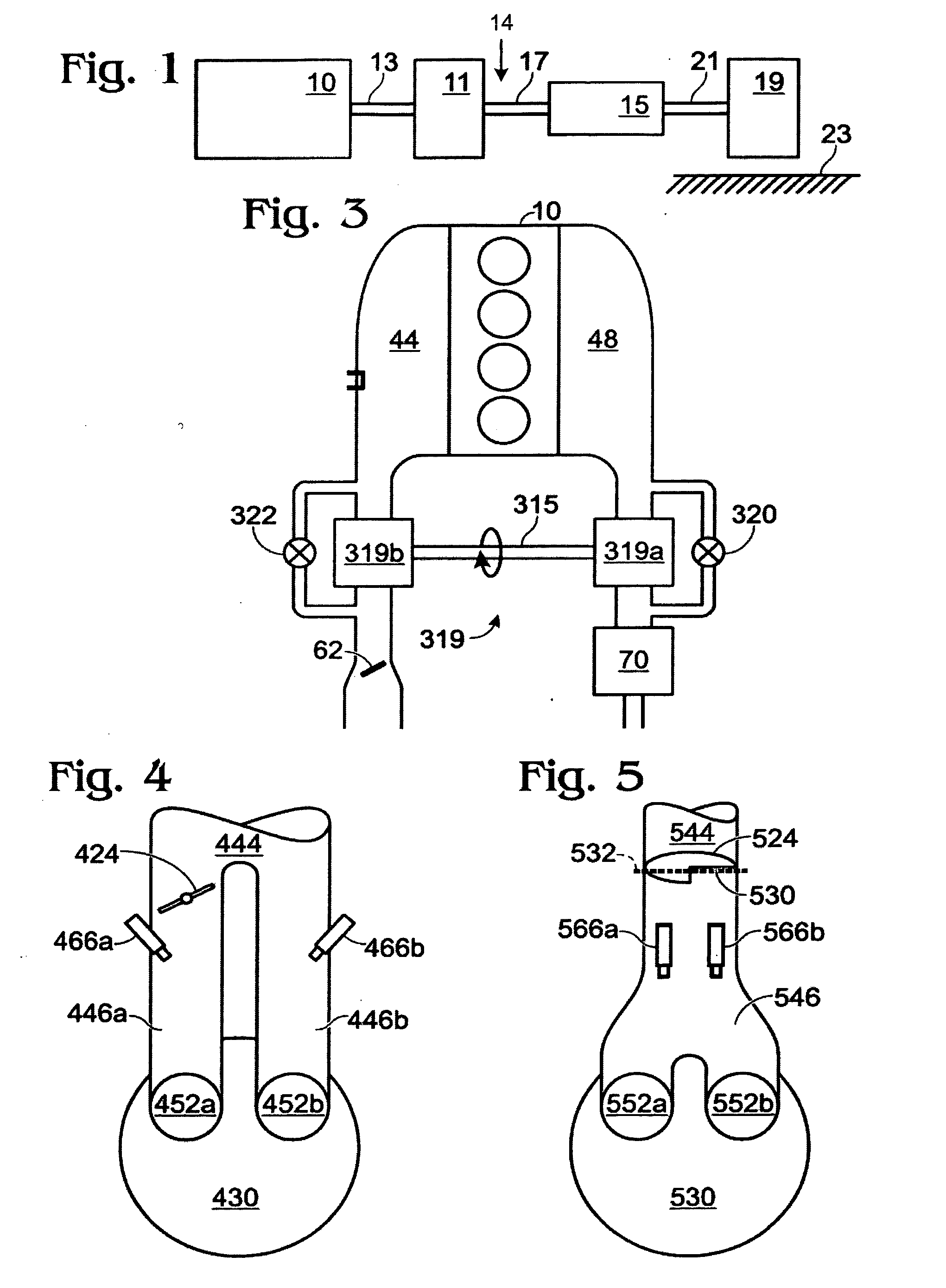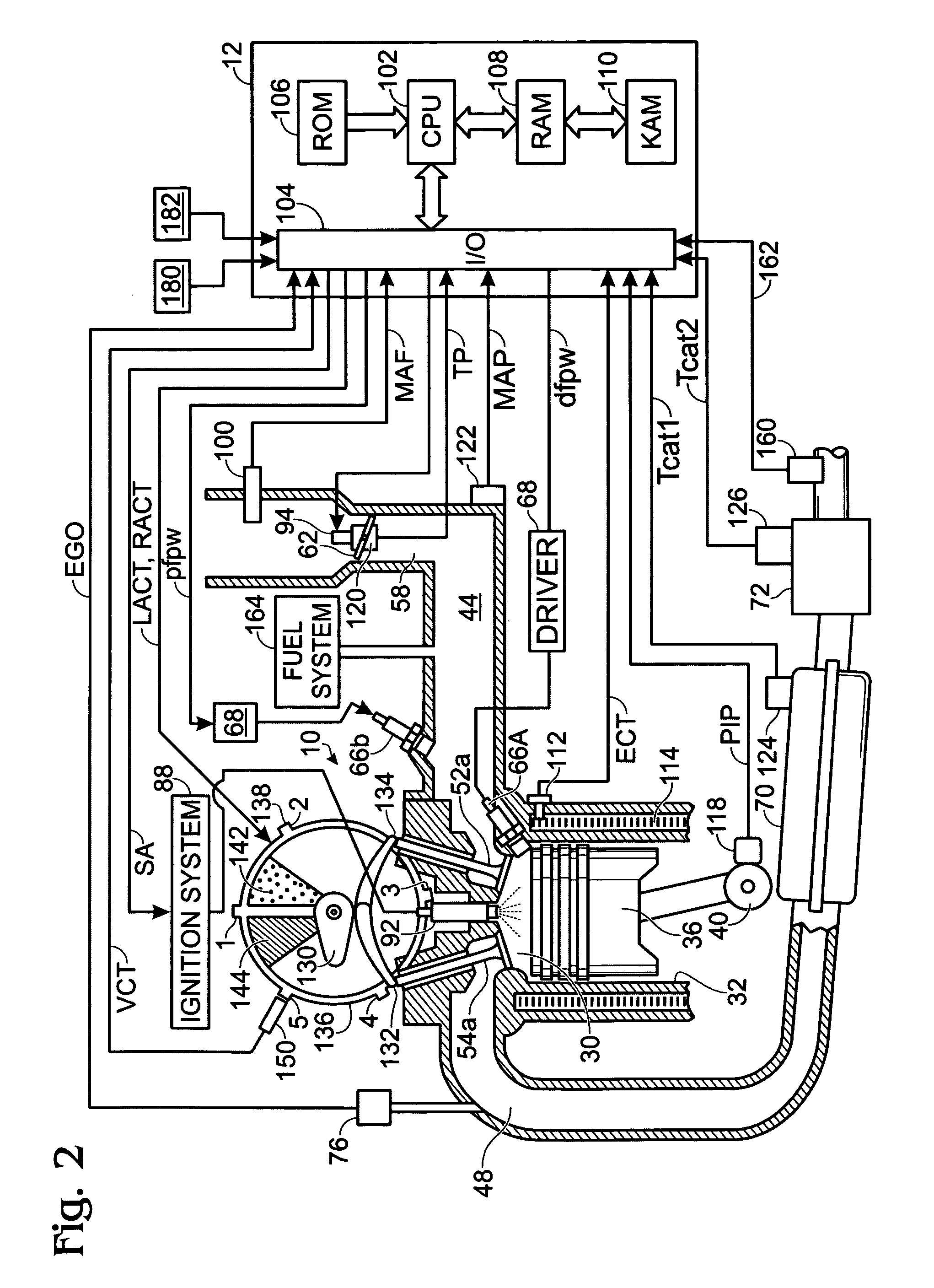Engine output control system and method
a control system and engine technology, applied in the direction of electric control, machines/engines, mechanical equipment, etc., can solve the problems of engine torque being affected, the combustion air-fuel ratio may inadvertently swing lean or rich during such operation, etc., and achieve the desired air-fuel ratio and engine output torque
- Summary
- Abstract
- Description
- Claims
- Application Information
AI Technical Summary
Benefits of technology
Problems solved by technology
Method used
Image
Examples
second embodiment
[0122] Referring now to FIGS. 14-15, a second embodiment for enabling fuel types is described that accounts for limiting some fuel types during engine warm-up / starting operation. In this embodiment, a warm-up strategy is described which can apply to various engine concepts using at least two fuel types, such as two PFI injectors per cylinder, one DI and one PFI injector per cylinder, or one ethanol blend injector and one gasoline injector, etc. In this way, engine control strategy can be included to prevent use of a fuel type (such as an ethanol blend) when the engine is too cold, and transition (gradually or abruptly) towards usage as the engine warms up. This can be done for at least the following reasons. (1) In the example where ethanol or an ethanol blend is used, such fuel can be less volatile than gasoline (e.g., 10% vaporization occurs at approximately 100 degrees F. for gasoline vs. 160 degrees F. for 85% ethanol). Attaining adequate vaporization and air-fuel mixing with et...
first embodiment
[0149] In a first embodiment, sensitivity of knock-limited spark advance may be mapped to a number of variables, such as RPM, torque, air / fuel ratio, engine intake air temperature, and also the amount of ethanol reduction (e.g., EF_MUL) or ethanol fraction as an additional variable.
[0150] In a second embodiment, where spark retard alone to avoid knock may be insufficient (e.g., excessive spark retard can cause surge and / or high exhaust temperature), additional modifications may be made. For example, the routine can first retard spark as much as feasible, then enrich the combustion air-fuel ratio to avoid or reduce knock. If the maximum feasible enrichment is encountered, then a transmission downshift may be commanded.
third embodiment
[0151] In a third embodiment, the routine can first retard spark as much as feasible, then command a transmission downshift. If there is still a potential for knock, the routine can then enrich enough to avoid or reduce knock.
[0152] In a fourth embodiment, the routine can limit maximum load with electronic throttle control. Such an approach may be used alone, or in combination with one of the first, second, and / or third embodiment above if those approaches provide insufficient knock control (because limiting maximum load may cause degraded driver satisfaction). The maximum allowed load can be mapped as a function of EF_MUL or ethanol fraction, engine speed, engine coolant temperature, relative air / fuel ratio, and other variables. For example, the following function may be used:
MAX_LOAD=f(EF—MUL or EF, RPM, ECT, a / f, etc.)
PUM
 Login to View More
Login to View More Abstract
Description
Claims
Application Information
 Login to View More
Login to View More - R&D
- Intellectual Property
- Life Sciences
- Materials
- Tech Scout
- Unparalleled Data Quality
- Higher Quality Content
- 60% Fewer Hallucinations
Browse by: Latest US Patents, China's latest patents, Technical Efficacy Thesaurus, Application Domain, Technology Topic, Popular Technical Reports.
© 2025 PatSnap. All rights reserved.Legal|Privacy policy|Modern Slavery Act Transparency Statement|Sitemap|About US| Contact US: help@patsnap.com



